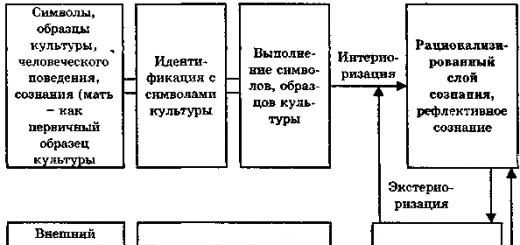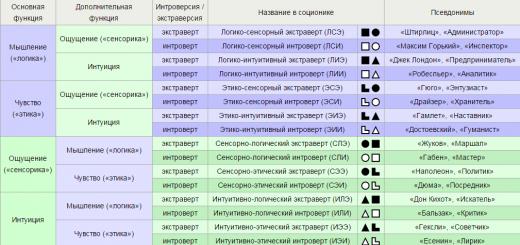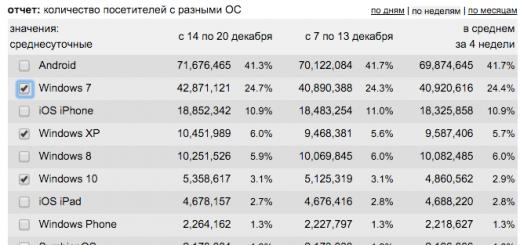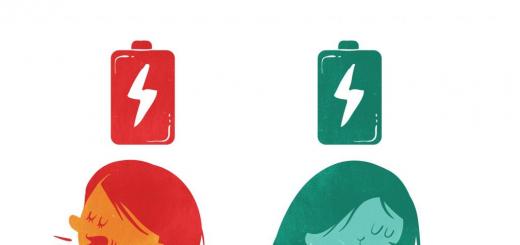The pioneer of the study of the "theory of snow" was the young farmer Wilson Alison Bentley, nicknamed "Snowflake". From childhood, he was attracted by the unusual shape of crystals falling from the sky. In his hometown of Jericho in the northern United States, snowfalls were a regular occurrence, and young Wilson spent a lot of time outside studying snowflakes.
Wislon "Snowflakes" Bentley
Bentley adapted a camera to a microscope given by his mother for his 15th birthday and tried to capture snowflakes. But it took almost five years to improve the technology - only on January 15, 1885 was the first clear picture taken.
Throughout his life, Wilson has photographed 5,000 different snowflakes. He never ceased to admire the beauty of these miniature works of nature. To obtain his masterpieces, Bentley worked in sub-zero temperatures, placing each whole of the snowflakes he found against a black background.
Wilson's work has been praised by both scientists and artists. He was often invited to speak at scientific conferences or exhibit photographs in art galleries. Unfortunately, Bentley died at the age of 65 from pneumonia, without proving that there are no identical snowflakes.
The baton of the "theory of snow" was picked up a hundred years later by Nancy Knight, a researcher at the National Center for Atmospheric Research. In a paper published in 1988, she proved the opposite - identical snowflakes can and should exist!

Dr. Knight tried to reproduce the process of building snowflakes in the laboratory. To do this, she grew several water crystals, subjecting them to the same processes of supercooling and supersaturation. As a result of the experiments, she managed to get snowflakes absolutely identical to each other.
Further field observations and processing of experimental errors allowed Nancy Knight to assert that the occurrence of identical snowflakes is possible and is determined only by probability theory. After compiling a comparative catalog of celestial crystals, Knight concluded that snowflakes have 100 signs of difference. Thus, the total number of appearance options is 100! those. almost 10 to the 158th power.
The resulting number is twice the number of atoms in the universe! But this does not mean that coincidences are completely impossible - Dr. Knight concludes in his work.
And now - new research on the "theory of snow". The other day, Professor of Physics at the University of California, Kenneth Libbrecht, published the results of many years of research by his scientific group. “If you see two identical snowflakes, they are still different!” - says the professor.
Libbrecht proved that for every five hundred oxygen atoms with a mass of 16 g/mol, there is one atom with a mass of 18 g/mol in the composition of snow molecules. The structure of the bonds of a molecule with such an atom is such that it implies an innumerable number of options for compounds within the crystal lattice. In other words, if two snowflakes really look the same, then their identity still needs to be verified at the microscopic level.
Learning the properties of snow (and snowflakes in particular) is not child's play. Knowledge about the nature of snow and snow clouds is very important in the study of climate change. And some of the unusual and unexplored properties of ice can also find practical applications.
Maria Evgenievna Eflatova
Purpose of the game: development of visual perception, teach how to put together a whole image from parts; develop thinking, speech, enrich vocabulary.
For the game, cut out a few snowflakes of various shapes(older children can do it themselves, glue the finished snowflakes onto cardboard and dry under pressure. (to make sure the pictures are straight) Then we cut the pictures into several parts. (depending on the age and skills of the child)
Game progress:
View Image snowflakes, talk about what's the same no snowflakes. Then notice the "broken" snowflakes"Look, a strong wind blew, snowflakes twisted and broke. Let's collect" snowflakes"Invite the child to find the missing half. Fold the two parts together - they should join into a whole image. Let the child find and fold all pairs of cards. After the game, you can play flying snowflakes, spin around, blow on each other.

Related publications:
"Help the penguins make out snowflakes" In order for a child to be taught to distinguish colors or to consolidate knowledge of colors, different ones are needed.
New Year's Eve is the most favorite holiday for children, and many adults. Children are happy to prepare for the meeting of Santa Claus. Teach.
I made snowflakes, 200 pieces, cut out identical ones from printer paper in three colors, from squares with a side of 10 cm, connected 5 pieces each.
Winter. Winter is three long winter months: a snowy December, a frosty sunny January and an angry February with blizzards. Winter nature is submerged.
Here is such a wonderful, bright and easy-to-make snowflake I got. It consists of several snowflakes of different sizes.
Fairy tales about snowflakes."Magical winter miracle". Snowflakes are dancing: Flying and whirling, In the sun on a frosty day they are silvering. Openwork dresses, carved scarves. Magic.
Here comes the long-awaited winter. The charm of the first snow. Soon New Year and Christmas. White snowflakes swirled in the air. I wanted to.
Quite a bit remains until the brightest holiday - the New Year, which means that New Year's creativity is in full swing. How many interesting.
Identical snowflakes are found in nature. In exceptional cases. This was first recorded by the US National Center for Atmospheric Research in 1988.
Photo: pixabay.com
Researcher Nancy Knight in his work "No Two Alike?" proved that identical snowflakes can occur in nature.
Knight came to this conclusion after she experimentally obtained the same snowflakes in the laboratory. She proved her theory mathematically, through the theory of probability. She deduced 100 distinguishing features of snowflakes, by which it can be judged that there are 10 to 158 degrees of different variants of snowflakes. And, although the resulting number is infinitely large, this does not exclude the possibility of matching snowflakes, Knight argues.
At the same time, according to professor of physics at the University of California Kenneth Libbrecht, outwardly identical snowflakes have differences in the internal structure, namely, in the crystal lattice. Therefore, it cannot be said that in principle it is possible to find completely identical snowflakes in shape and atomic structure.
How are snowflakes formed and why are their shapes different?
The process of snowflake formation involves the sublimation of crystals from the gas phase, bypassing the liquid state. During the formation of a snowflake, water molecules grow randomly from the moment of formation of the initial crystal. Thus, the growth of a snowflake proceeds in an unordered manner.
The growth of snowflakes depends on external conditions, such as temperature and humidity. Depending on these and other conditions, new layers of molecules are superimposed on each other, each time forming a new shape of a snowflake.
All snowflakes have six sides, because when water molecules freeze, they line up in a special order, resulting in a hexagonal geometric shape.
The growth of a snowflake is determined by the air temperature at which it was formed. The lower the temperature, the smaller the size of the snowflake.
The directions of snowflake growth are due to the fact that ice crystals are hexagonal. Two crystals cannot be connected at an angle, they are always attached to each other by a face. Therefore, the rays always grow in six directions, and a "branch" can depart from the beam only at an angle of 60 or 120 degrees.
Scientists identify two options for the formation of snow crystals. In the first case, water vapor carried by the wind to a very high altitude, where the temperature is about 40 ° C, can suddenly freeze, forming ice crystals. In the lower layer of clouds, where water freezes more slowly, a crystal is created around a small speck of dust or soil. This crystal, of which there are from 2 to 200 in one snowflake, has the shape of a hexagon, so most snowflakes are a six-pointed star.
"Land of Snows" - such a poetic name was invented for Tibet by its inhabitants.
The shape of a snowflake depends on many factors: temperature around, humidity, pressure. Nevertheless, 7 main types of crystals are distinguished: plates (if the temperature in the cloud is from -3 to 0 ° C), stellate crystals, columns (from -8 to -5 ° C), needles, spatial dendrites, columns with a tip and wrong shapes. It is noteworthy that if the snowflake rotates when falling, then its shape will be perfectly symmetrical, and if it falls sideways or in some other way, then it will not.
Ice crystals are hexagonal: they cannot connect at an angle - only at an edge. Therefore, the rays from a snowflake always grow in six directions, and the branching from the beam can only depart at an angle of 60 or 120 °.

Since 2012, World Snow Day has been celebrated on the penultimate Sunday of January. This was initiated by the International Ski Federation.
Snowflakes appear white because of the air they contain: light of different frequencies is reflected on the edges between the crystals and scattered. The size of an ordinary snowflake is about 5 mm in diameter, and the mass is 0.004 g.

When scoring the film "Alexander Nevsky", the creak of snow was obtained by squeezing mixed sugar and salt.
It is believed that no two snowflakes are the same. This was first proven in 1885, when American farmer Wilson Bentley took the first successful microscopic picture of a snowflake. He devoted 46 years to this and took more than 5,000 photographs, on the basis of which the theory was confirmed.
Familiar to every schoolchild, the statement that there are no two identical snowflakes has been repeatedly questioned. But the unique studies of the California Institute of Technology were able to put an end to this truly New Year's issue.
Snow forms when microscopic water droplets in clouds are attracted to dust particles and freeze.
The ice crystals that appear in this case, which at first do not exceed 0.1 mm in diameter, fall down and grow as a result of condensation of moisture from the air on them. In this case, six-pointed crystalline forms are formed.
Due to the structure of water molecules, only 60° and 120° angles are possible between the rays of the crystal. The main water crystal has the shape of a regular hexagon in the plane. New crystals are then deposited on the tops of such a hexagon, new ones are deposited on them, and thus various forms of snowflake stars are obtained.
Professor of physics at the University of California Kenneth Libbrecht published the results of many years of research by his scientific group. “If you see two identical snowflakes, they are still different!” says the professor.
Libbrecht proved that for every five hundred oxygen atoms with a mass of 16 g/mol, there is one atom with a mass of 18 g/mol in the composition of snow molecules.
The structure of the bonds of a molecule with such an atom is such that it implies an innumerable number of options for compounds within the crystal lattice.
In other words, if two snowflakes really look the same, then their identity still needs to be verified at the microscopic level.
Learning the properties of snow (and snowflakes in particular) is not child's play. Knowledge about the nature of snow and snow clouds is very important in the study of climate change.










